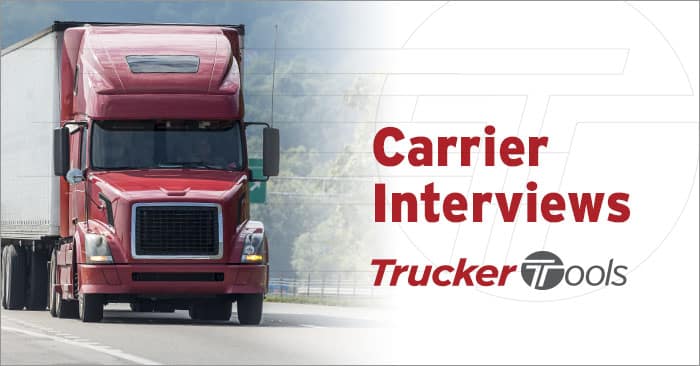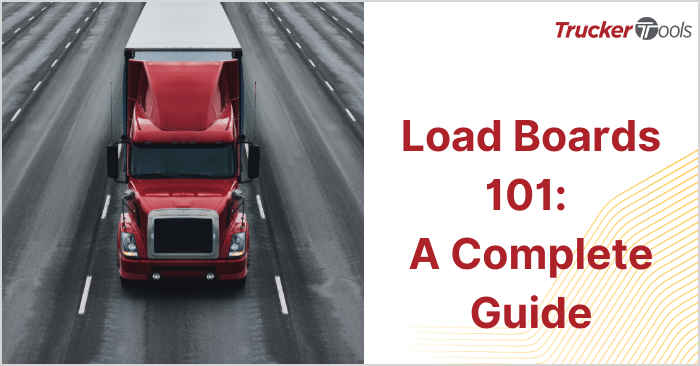After careers in the U.S. Navy and hospitality management, Wayne Cragg got into the trucking industry based on a recommendation from a friend who ran a trucking school at the time. Eight years later, Wayne is hauling flatbed for a trucking company based out of Redmond, Ore., and blogging about his life as a trucker for CDL training company Driver Solutions. Wayne’s lifestyle as a trucker gives him lots of opportunities to indulge in one of his favorite hobbies, photography. In addition to hauling flatbed, Wayne is a professional photographer who enjoys photographing the natural beauty of places such as Glacier National Park and the Colorado Rockies.
Trucker Tools recently sat down with Wayne to learn more about his journey in trucking, the challenges of running flatbed right now and how he achieves a 99 percent on time delivery rate.

Flatbedding the 48
After some stints running dry van, intermodal, reefer and automotive as both a company driver and owner operator, Wayne signed on with Central Oregon Trucking Company in 2014. Wayne did a lease purchase for two years and lives in his truck, running primarily steel and glass across the 48 states, as well as Canada. When we spoke with Wayne, he was about to hit the 300,000 mile mark hauling flatbed with COTC. We asked him about the biggest challenges facing flatbed truckers right now and he said that delays at shipper and receiver locations continue to be a major issue.

“Shippers and receivers are having a really tough time keeping employees and trying to get employees at docks,” said Wayne. “What I’ve been hearing is that shippers and receivers are just really short staffed because of Coronavirus. I picked up some glass the other day and I was there all day — 11 hours on a Friday.”
Dealing with Detention
Detention was a problem in trucking before COVID-19 hit, a problem that has only intensified in the last year. In our conversation with Wayne, we asked him how he deals with being detained at shipper and receiver locations for long hours. According to Wayne, having things to do that get you outside of the truck is essential. For Wayne, it’s photography and blogging.
“A lot of people when they’re detained for a day or two, they sit in their trucks and stew about it,” Wayne said. “I learned early on that if I’m going to be detained, even if I’m getting paid, it’s tough to just sit around for a long time. You have to find a good hobby that can get you out of the truck. It’s important for your mental health. You’ve got to stay mentally tough and if you’re sitting in your truck for five, six or seven hours stewing about it, you’re going to get in that truck and drive mad.”
“A lot of people when they’re detained for a day or two, they sit in their trucks and stew about it,” Wayne said. “I learned early on that if I’m going to be detained, even if I’m getting paid, it’s tough to just sit around for a long time. You have to find a good hobby that can get you out of the truck. It’s important for your mental health. You’ve got to stay mentally tough and if you’re sitting in your truck for five, six or seven hours stewing about it, you’re going to get in that truck and drive mad.”
Managing Flatbed Weight Distribution
Wayne also told us that managing your weight distribution when you’re running flatbed is always a challenge. He calculates his weight distributions himself and appreciates it when a shipper can tell him how much each bundle of steel or glass weighs because it makes weight distribution easier to calculate. Wayne drives a 48 foot by six axle with a roll-top. The roll-top is so heavy on his steers that Wayne can’t move weight around on his fifth wheel.
“At this point, I have to nail the weights,” said Wayne. “Two weeks ago, my load was 79,980 pounds and you’re overweight at 80,000 pounds. When people get into flatbedding, weight distribution is one of the biggest challenges. It can get really technical and eyes can glaze over when you’re talking about it because it’s boring. But if you don’t get the weight distribution right on a 48 foot by six axle, you’re not going to survive very long. You really have to pay attention to it.”
“At this point, I have to nail the weights,” said Wayne. “Two weeks ago, my load was 79,980 pounds and you’re overweight at 80,000 pounds. When people get into flatbedding, weight distribution is one of the biggest challenges. It can get really technical and eyes can glaze over when you’re talking about it because it’s boring. But if you don’t get the weight distribution right on a 48 foot by six axle, you’re not going to survive very long. You really have to pay attention to it.”
Achieving 99 Percent On-Time Delivery
Wayne shared with us that over the last eight years, he’s earned a 99 percent on-time delivery rate. We asked Wayne about how he manages to achieve this high rate of on-time delivery and he told us that it’s all about trip planning. Recently, a Nor’easter was forecast to hit the East Coast as Wayne was hauling a load across the country, from east to west. He told us that he started trip-planning four days in advance, knowing that the storm was going to hit his drop-off location in Pennsylvania.
“Part of me being on time is that I always watch the weather,” Wayne said. “With the Nor’easter, I kept getting up earlier and earlier each day because of the weather forecast. Two days prior, I was getting up at 3:00 a.m. to get running by 3:45 or 4:00 a.m. The day that the storm was scheduled to hit the East Coast, I was up at 2:00 a.m. It was a race against the clock and it stunk getting up early on those days, but I had to. I was at the receiver’s by 7:00 a.m. at the heart of where the storm was going to hit later in the day. By the time the storm ended that night, they had gotten about 18 inches of snow where I’d delivered to in Pennsylvania earlier in the day. It’s just part of trip-planning in the wintertime.”
To learn more about Wayne, follow him on Facebook or LinkedIn. To see Wayne’s photos, visit https://www.facebook.com/waynecraggphotography/.
Speaking of winter driving, check out our blog for Winter Safety Tips for Truckers. To download load Trucker Tools’ free driver app, visit https://www.truckertools.com/carriers/.






